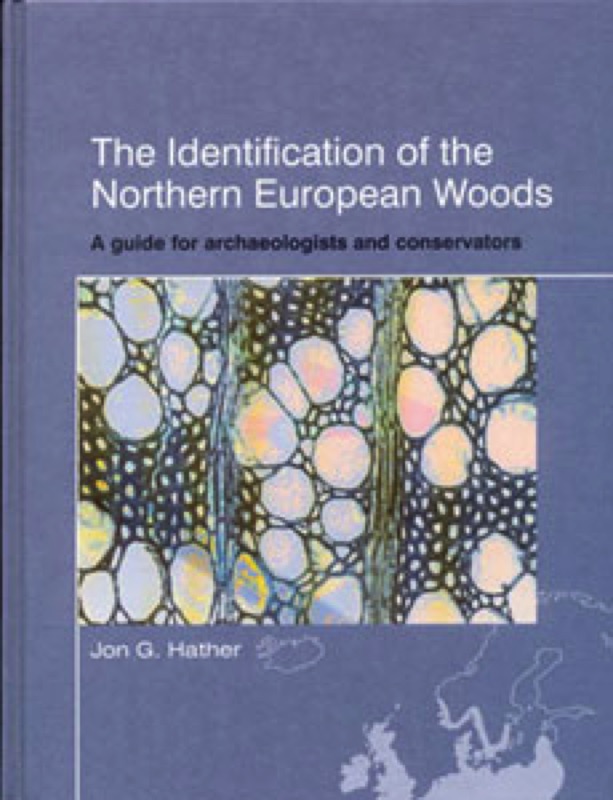The identification of wood is an invaluable tool for all archaeologists and conservators interested in artefacts, structures, technology or past environments. This book is a guide to the identification of the trees and larger shrub species of Northern Europe based on anatomical characters. It is divided into three sections. The first provides notes on anatomy and methods of sampling and identification. The second section is an atlas of the 52 identifiable taxa, covering over 130 species, divided into 8 anatomical groups. Each of the eight groups presents simple-to-use keys to the identification of the taxa within them. Each identifiable taxon is illustrated by light micrographs and their diagnostic characters are summarised in tabulated form. The third section provides summary tables of the major diagnostic characters used in the identification of the taxa contained in the book.
This book aims to provide more than a simple atlas of photographs of wood anatomy. It aims to present a workable methodology by which archaeologists and conservators can identify wood.
Acknowledgements
Part One: Introduction
Introduction
'Northern Europe' - geographical and botanical definitions
Introduction to the anatomical characters
The wood of the Gymnosperms
The wood of the Dicotyledons
The variability of anatomical characters
The level of identification of archaeological wood
Methods for identification
A note on microscopy
Identifying artefactual and non-artefactual wood
Sectioning methods
Waterlogged wood and frozen wood
Desiccated wood
Charcoal
Reference collections
Concluding remarks
How to use this book to identify wood
Bibliography
Part Two: Identification of Northern European woods
Organisation of the taxa descriptions and key to the anatomical groups
A note on the tables
A note on the distribution map
Group 1 - Gymnosperms
Taxus baccata
Pinus spp.
Juniperus spp.
Abies alba
Larix decidua
Picea abies
Group 2 - Woods with included phloem
Suaeda vera
Group 3 - The ring porous woods
Quercus spp.
Castanaea sativa
Berberis vulgaris
Rosa spp
Fraxinus excelsior
Hippophae rhamnoides
Morus nigra
Clematis vitalba
Vitis vinifera
Ulmus spp.
Group 4 - Diffuse porous woods with mostly solitary pores
Euonymus europaeus
Calluna vulgaris
Buxus sempervirens
Viburnum opulus
Viburnum lantana
Cornus sanguinea
Cornus mas
Maloideae
Ligustrum vulgare
Lonicera periclymenum
Lonicera xylosteum
Fagus sylvatica
Group 5 - Diffuse porous woods with solitary pores, pores in short radial files and/or clusters
Betula spp.
Salix spp.
Populus spp.
Rubus spp.
Tilia spp.
Arbuteus unedo
Ficus carica
Prunus spinosa/P.domestica
Prunus avium
Prunus padus
Acer campestre group
Acer pseudoplatanus group
Juglans regia
Frangula alnus
Group 6 - Diffuse porous woods with pores in long radial files
Ilex aquifolium
Corylus avellana
Alnus glutinosa
Carpinus betulus
Group 7 - Diffuse porous woods with pores in clusters
Sambucus nigra
Sambucus racemosa
Hedera helix
Group 8 - Diffuse porous woods with pores in dendritic arrangement
Rhamnus catharticus
Part Three: Character tables
Introduction
Table 3.1 RLS anatomy sorted by species
Table 3.2 RLS anatomy sorted by perforation plate type
Table 3.3 RLS anatomy sorted by ray anatomy
Table 3.4 RLS anatomy sorted by TS anatomy
Table 3.5 TLS anatomy sorted by TS anatomy
Table 3.6 TLS anatomy sorted by species
Table 3.7 Unisereate rays present (TLS)
Table 3.8 Unisereate rays absent (TLS)
Table 3.9 Unisereate rays composed of upright cells only (TLS)
Table 3.10 Rays of two distinct sizes present (TLS)
Table 3.11 Large multisereate rays present (TLS)
Table 3.12 Aggregate rays present (TS and TLS)
Table 3.13 Sheath cells present (TLS)
Table 3.14 Undulating ring boundary (TS)
Table 3.15 Rays distended at ring boundary (TS)
Table 3.16 Spiral thickening present/absent, sorted by species (LS)
Table 3.17 Spiral thickening present/absent, sorted by spiral thickening (LS)
Table 3.18 Spiral thickening present/absent, sorted by TS anatomy (LS)
Table 3.19 Habit sorted by species
Table 3.20 Habit sorted by habit
Table 3.21 Habit sorted by TS anatomy
